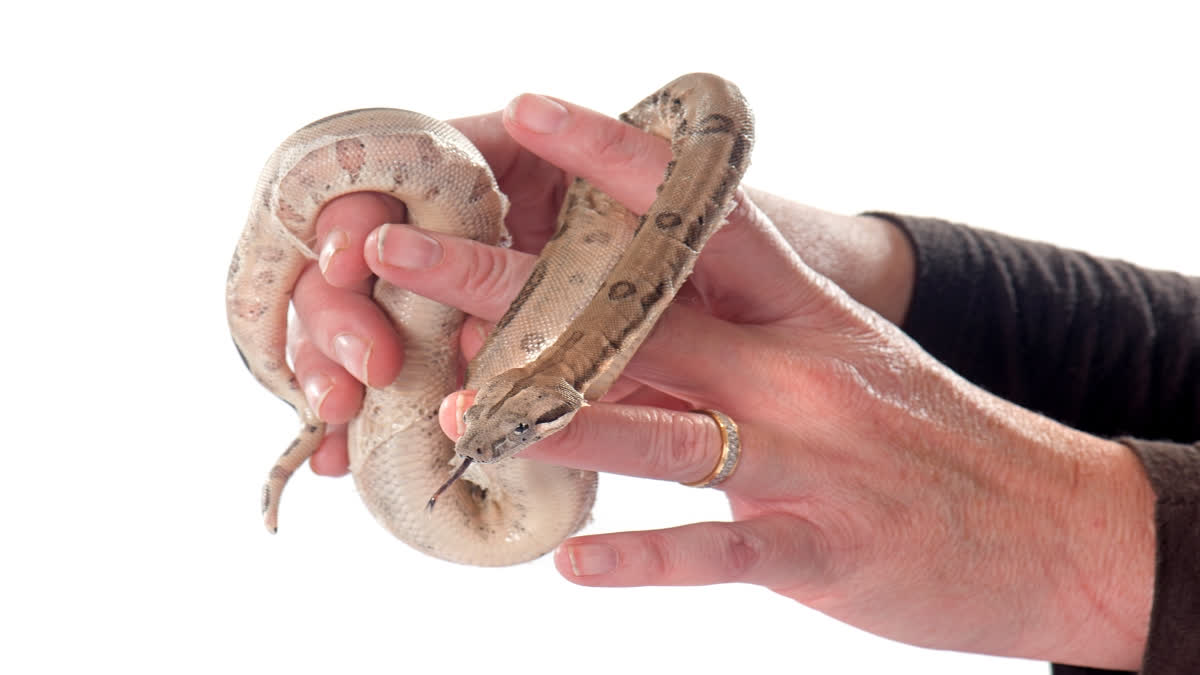New Delhi: In India, people living in densely populated low altitude and agricultural areas of Bihar, Jharkhand, Madhya Pradesh, Odisha, Uttar Pradesh, Andhra Pradesh Telangana, Rajasthan and Gujarat accounts for 70 per cent of deaths particularly during the rainy season when encounters between snakes and humans are more frequent at home and outdoors areas, the Ministry of Health and Family Welfare (MoHFW) said on Tuesday.
"In India, as per a systematic literature studies conducted by researchers showed that around 58,000 deaths occur of an estimated three-four million snake bites annually which accounts for half of all snakebites death globally," the Ministry said while releasing a national action plan for prevention and control of snakebite envenoming (NAPSE).
As per the Central Bureau of Health Investigation (CBHI) reports (2016-2020), the average annual frequency of snakebite cases in India is around three lakh and about 2,000 deaths occur due to snakebite envenoming, the ministry said.
The ministry aiming to halve the snakebite deaths by 2030 through 'One Health' approach.
"The factors that may be contributing to the high incidence of snake bite include lower altitude, the more extensive and intensively farmed arable land, species and population densities of snake species of medical importance and many a times the snake densities are relatively high, particularly in grain agriculture areas which attracts the large rodent and amphibian populations that are eaten by snakes," the Ministry said.
It said that agricultural laborers in India face heightened vulnerability to snakebites due to their dependence on traditional, non-mechanised, and cost-effective farming methods.
"The risk is exacerbated during the monsoons, as this coincides with both heightened agricultural activities and snake breeding seasons. Additionally, their exposure to precarious living conditions, inadequate lighting, sleeping on the ground, and the use of outdoor toilets further elevate the likelihood of encountering snakes," the ministry stated.
The peak of snakebite cases as per the reported data on IDSP-IHIP shows that there is an increase in the number of cases from June to April over the years.
As of today, the world is home to 3,509 species of snakes out of which 600 species of snakes are venomous. Among the 310-snake species documented in India, only four have been identified as primary contributors to life-threatening snakebites.
Termed the 'Big four', these species encompass the spectacled cobra (Naja naja), Russell's viper (Daboia russelii), common krait (Bungarus caeruleus), and saw-scaled viper (Echis carinatus), the Ministry said.
In India, around 90 per cent of snakebites are caused by the 'big four' among the crawlers - common krait, Indian cobra, Russell's viper and saw scaled viper.
"With a vision to reduce snakebite deaths by halve by 2030, NAPSE provides a broad framework for states to develop their own action plan for management, prevention and control of snakebites through the 'One Health' approach. The activities envisaged under human, wildlife, tribal and animal health component will be undertaken by concerned stakeholders at all levels," said Union Health Secretary Apurva Chandra while releasing NAPSE.
A booklet on 'Snakebite - Let's put an end to snakebite deaths', which was also launched, will be used for creating awareness among the public.



